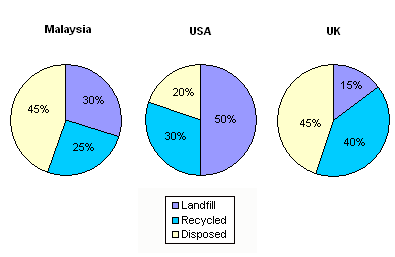Required Task Responses are:
1,Summarise the info HOW? selecting the MAIN points and rep0rting it.This also means that not to select everything but MAIN POINTS ONLY.
2. Compare ( equivalents, similarities and contrasts) where relevant; do not compare UNNECESSARILY everywhere.
Expected sentence structures: 150 words = 10-12 sentences.So, 3 simple sentences+5 compound + 5 or more complex pattern.
Common mistakes =
1. sentence level:Subject verb agreement, word order, plural/singular,adjective/noun error,articles,prepositions,run-on sentences/comma splices,dangling modifiers and punctuation.
2. paragraph level : unity,accurate use of cohesions,phrases and parallelism.
3.Vocabulary: inaccurate interpretation of Data or lack of Data analysis.
****Please find the uploaded attachment to see this pie chart ******* (taken from IELTS cambridge-7 task 4).
PARA 1.The pie charts show the amount of electricity that was produced from 5 different sources (coal,hydro,oil,natural gas and nuclear) in Australia and France in 1980 and 2000, together with the total production of electricity in those years.
PARA 2/BODY 1[scope - two main sources and rest of them being eliminated ( hyrdo,natural and oil). However, points are generalised here; called general trend]
Overall, there are two key points to note. First, the total production of electricity in both Australia and France increased dramatically between 1980 and 2000, a rise of between 70% and 100% in a 20 year period. Secondly, the source of the electricity was very different in the two countries.
PARA 3/BODY 2 [ just one main point and its contrast; main point is coals so compare 1990/2000 in Australia and then compare that of France]
Looking at the charts in more detail, we can see that in Australia the amount of electricity produced from coal increased rapidly from 50 to 130 units, which was more than 75% of the total production of electricity in 2000. In France, on the other hand, the amount of electricity produced from coal did not increase and remained stable at only 25 units. This means that the percentage produced from coal declined significantly.
PARA 4/BODY 3 [second main point and its contrast - main point = nuclear power. contrasted as same as the previous point]
It is also noteworthy that in France the production of electricity from nuclear power grew enormously from 15 to 126 units, representing just under 75% of the total production in 2000, whereas in Australia no electricity was produced from nuclear
To sum up,generating electricity from natural gas and hydro power had been declined,but the units created from the oil had been increased by 2000 in both countries. <----[This is a summary about the other sources so the phrase "sum up" instead of "conclude up,is better].
This is the full picture of writing task 1 (without any comments)
The pie charts show the amount of electricity that was produced from 5 different sources in Australia and France in 1980 and 2000, together with the total production of electricity in those years.
Overall, there are two key points to note. First, the total production of electricity in both Australia and France increased dramatically between 1980 and 2000, a rise of between 70% and 100% in a 20 year period. Secondly, the source of the electricity was very different in the two countries.
Looking at the charts in more detail, we can see that in Australia the amount of electricity produced from coal increased rapidly from 50 to 130 units, which was more than 75% of the total production of electricity in 2000. In France, on the other hand, the amount of electricity produced from coal did not increase and remained stable at only 25 units. This means that the percentage produced from coal declined significantly.
It is also noteworthy that in France the production of electricity from nuclear power grew enormously from 15 to 126 units, representing just under 75% of the total production in 2000, whereas in Australia no electricity was produced from nuclear.
To sum up,generating electricity from natural gas and hydro power had been declined,but the units created from the oil had been increased by 2000 in both countries.




